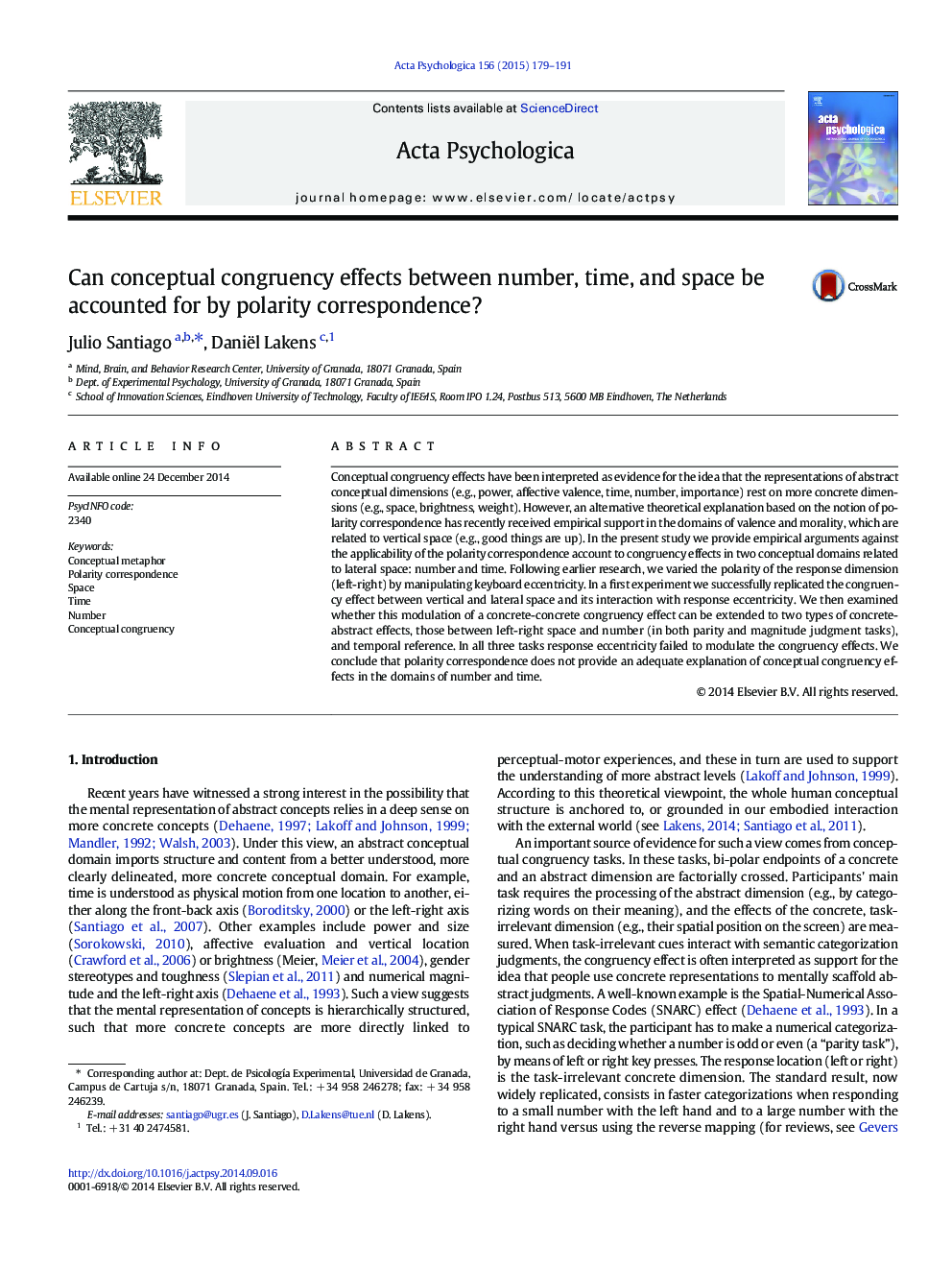| Article ID | Journal | Published Year | Pages | File Type |
|---|---|---|---|---|
| 7277517 | Acta Psychologica | 2015 | 13 Pages |
Abstract
Conceptual congruency effects have been interpreted as evidence for the idea that the representations of abstract conceptual dimensions (e.g., power, affective valence, time, number, importance) rest on more concrete dimensions (e.g., space, brightness, weight). However, an alternative theoretical explanation based on the notion of polarity correspondence has recently received empirical support in the domains of valence and morality, which are related to vertical space (e.g., good things are up). In the present study we provide empirical arguments against the applicability of the polarity correspondence account to congruency effects in two conceptual domains related to lateral space: number and time. Following earlier research, we varied the polarity of the response dimension (left-right) by manipulating keyboard eccentricity. In a first experiment we successfully replicated the congruency effect between vertical and lateral space and its interaction with response eccentricity. We then examined whether this modulation of a concrete-concrete congruency effect can be extended to two types of concrete-abstract effects, those between left-right space and number (in both parity and magnitude judgment tasks), and temporal reference. In all three tasks response eccentricity failed to modulate the congruency effects. We conclude that polarity correspondence does not provide an adequate explanation of conceptual congruency effects in the domains of number and time.
Related Topics
Life Sciences
Neuroscience
Cognitive Neuroscience
Authors
Julio Santiago, Daniël Lakens,
